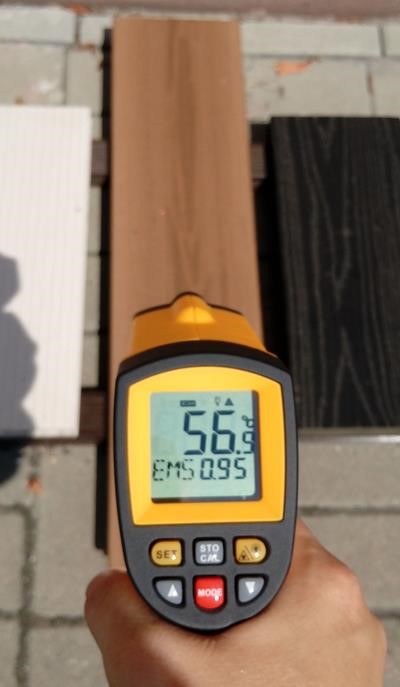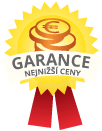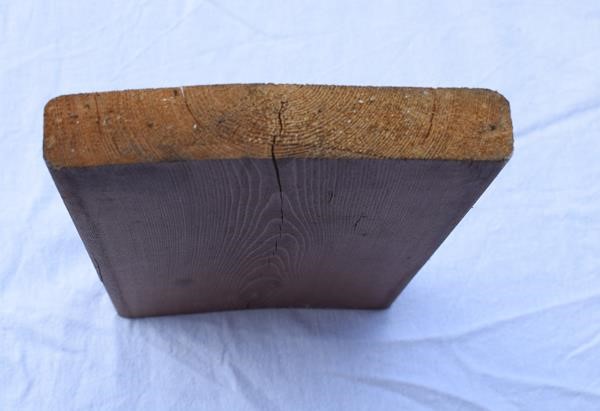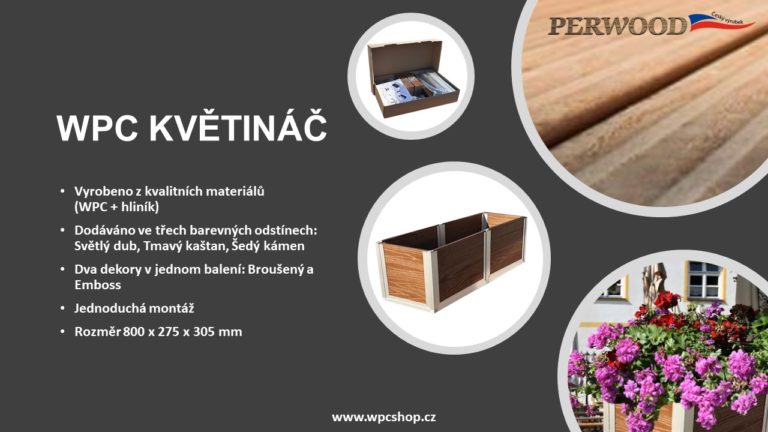As a hypothesis is often formed that “composite board heat up more than wood”, we engaged our technical partner to test if the claim is true. However, it must be noted that we compared PERWOOD WPC profiles that feature a composite containing a minimum PVC share of 50 %. Composite profiles containing, e.g., HDPE polymer, can be assumed to reach a higher heating rate. Likewise, a proportion of wood meal higher than 50% will lead to higher values, in analogy with wood boards.
The tests were conducted in the most realistic circumstances, trying to reflect all the conditions of everyday life. The boards were placed on supporting prisms just outside a building. For our experience, we chose the warmest days of the summer of 2018, 24 July to 7 August, with the boards exposed to the sunshine after noon.

Measurement using a pyrometer
For experience, we selected PERWOOD composite boards and wooden boards, both impregnated and fully free of impregnation. Test conditions: the observations were made on warm, almost cloudless days, with the air temperature reaching up to 35°C.
|
|
|
24 July 2018, external temperature: 25-35 |
||
|
Wood boards |
|
time 12:00 |
time 15:00 |
Mean |
|
Siberian larch (impregnated) |
34 |
64,3 |
49,2 |
|
|
Spruce (impregnated) |
36,3 |
64,8 |
50,6 |
|
|
Thermo jasan (impregnated) |
34,5 |
64,2 |
49,4 |
|
|
Bangkiari ne(impregnated) |
33,8 |
56,1 |
44,9 |
|
|
Prkna WPC |
HOME (dark chestnut)/p> |
34,3 |
63,7 |
49 |
|
HOME (Ivory) |
31,3 |
45,7 |
38,5 |
|
|
Grand Massive (Grey Stone) |
32,6 |
57,7 |
45,2 |
|
|
Real Massive (Light Oak) |
33,9 |
60,6 |
47,3 |
|
Result: The average temperature of wood boards ranged from 44°C to 50°C on the specific day. Composite boards reached average temperature of 38°C to 49°C.
Results: The average temperature of wood boards on that day ranged from 50°C to 61°C. Composite boards reached average temperature of 44°C to 59°C.
Conclusion: Composite boards do not heat up more than wood boards. On top of that, wood often reaches slightly higher temperatures.
An important issue is the profile colour: light-coloured profiles absorb less heat than the dark ones ( kompozitní deska Slonová kost měla vždy v průměru 10-20 st. C nižší hodnotu ).Two examples are given in Tables 1 and 2, but similar temperatures were observed on wood boards as well as on composite boards during the test. The boards heat up to relatively high temperatures within 1 to 3 hours, with each material reacting the same way (it heats up fast and releases the warms fast). The lighter the board colour is, the less it warms up; impregnation is no major factor in this situation.


Interesting fact: We noted during the test that as a result of exposure to the sunlight (lasting for about 3 weeks), some wood boards deformed so much that they started to crack (refer to the photo below).






